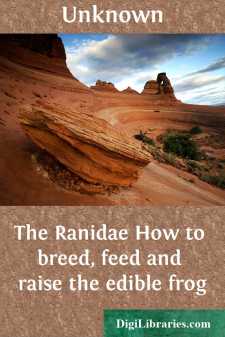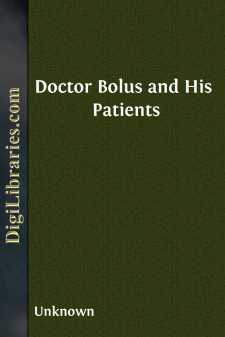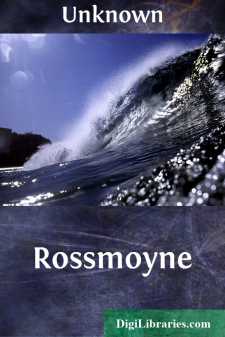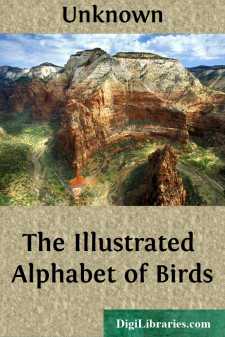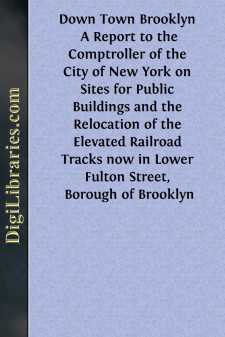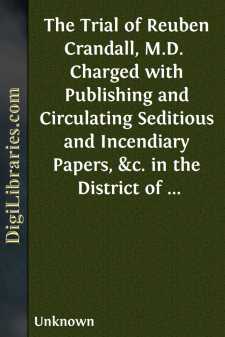Categories
- Antiques & Collectibles 13
- Architecture 36
- Art 48
- Bibles 22
- Biography & Autobiography 813
- Body, Mind & Spirit 142
- Business & Economics 28
- Children's Books 17
- Children's Fiction 14
- Computers 4
- Cooking 94
- Crafts & Hobbies 4
- Drama 346
- Education 46
- Family & Relationships 57
- Fiction 11829
- Games 19
- Gardening 17
- Health & Fitness 34
- History 1377
- House & Home 1
- Humor 147
- Juvenile Fiction 1873
- Juvenile Nonfiction 202
- Language Arts & Disciplines 88
- Law 16
- Literary Collections 686
- Literary Criticism 179
- Mathematics 13
- Medical 41
- Music 40
- Nature 179
- Non-Classifiable 1768
- Performing Arts 7
- Periodicals 1453
- Philosophy 64
- Photography 2
- Poetry 896
- Political Science 203
- Psychology 42
- Reference 154
- Religion 513
- Science 126
- Self-Help 84
- Social Science 81
- Sports & Recreation 34
- Study Aids 3
- Technology & Engineering 59
- Transportation 23
- Travel 463
- True Crime 29
Sort by:
by:
Unknown
Think of it! "One Dollar a Pound." The Editor of this book was brought face to face with the true possibilities in Frog raising by his love for this delicate meat and his inability to get it. As I had visited all the principal markets in New York City, a market where it is known the world over that if there is anything in the eatable line to be found it can be found there. This was not so of...
more...
by:
Unknown
ld Doctor Bolus was an old fashioned Doctor, and every morning started out with his cane, to visit his patients, sometimes taking with him his student, a man who had taken to studying medicine at thirty years old, in the hope of being the successor of Doctor Bolus. We will follow the Doctor’s rounds for one morning. First he called at the Squire’s, whose father was sick. The Doctor examined his...
more...
by:
Unknown
The Good News According to Matthew 1:1 The book of the genealogy of Jesus , the son of David, the son of Abraham. 1:2 Abraham became the father of Isaac. Isaac became the father of Jacob. Jacob became the father of Judah and his brothers. 1:3 Judah became the father of Perez and Zerah by Tamar. Perez became the father of Hezron. Hezron became the father of Ram. 1:4 Ram became the father of Amminadab....
more...
by:
Unknown
CHAPTER I. How a Dove-cot was fluttered in Rossmoyne. The old-fashioned clock is ticking loudly, ponderously, as though determined to betray the flight of fickle time and impress upon the happy, careless ones that the end of all things is at hand. The roses knock their fragrant buds against the window-panes, calling attention to their dainty sweetness. The pigeons coo amorously upon the sills outside,...
more...
by:
Unknown
Of all the objects, which have since the revolution, engaged the attention of the legislature, the proper method of adjusting our present quarrels with the Americans is undoubtedly the most important. For as the riches and power of Britain depend chiefly on trade, and that trade on her colonies; it is evident that her very existence as the first of commercial nations, turns upon this hinge. It cannot...
more...
by:
Unknown
THEILLUSTRATEDALPHABET OF BIRDS BOSTONWM. CROSBY & H.P. NICHOLS.1851. A a THE AUK A is an Auk, Of the Artic sea,He lives on the ice, Where the winds blow free. B b THE BLUE BIRD. B is a Blue Bird. In early spring,How sweet his songs Through the forest ring. C c THE CONDOR. C is a Condor, On the Andes'...
more...
by:
Unknown
Since the appointment of this committee on the 30th day of April, 1913, it has had frequent meetings, conferences and hearings. Conferences have been had with representatives from organizations that have given time and study to the subjects within the scope of this committee. Several public hearings were held, notice of which was given in the public press. Written communications have been invited from...
more...
by:
Unknown
THE FOX AND THE COCK. A Fox, one day, saw a Cock on the roof of a barn. “Come to me, my dear Master Cock,” said he; “I have always heard you are such a clever fellow; and I want to ask you a riddle.” Glad to hear himself praised, the foolish Cock came down, and the Fox caught him, and ate him in a moment. The praise of the wicked is always dangerous. A Dwarf one day met a Giant. “Let me come...
more...
by:
Unknown
PRESENT:Cranch, chief justice, Thruston and Morsell, justices. F. S. Key, district attorney, and J. M. Carlisle, for the prosecution. R. S. Coxe and J. H. Bradley, for the defence. John H. King, Nicholas Callan, James Kennedy, Walter Clarke, George Crandall, William Waters, Thomas Hyde, Thomas Fenwick, Samuel Lowe, George Simmes, Wesley Stevenson, and Jacob Gideon, jr., were empannelled and sworn...
more...


